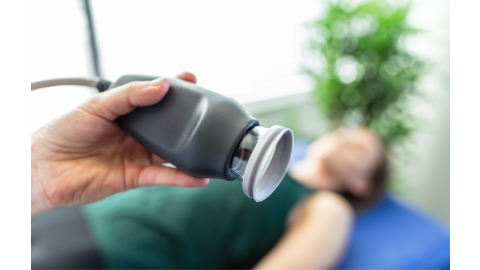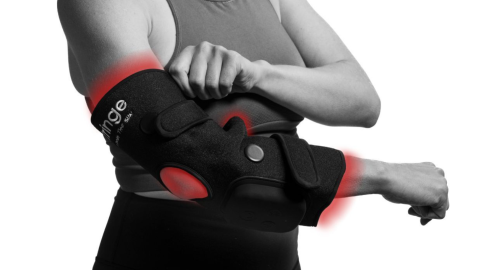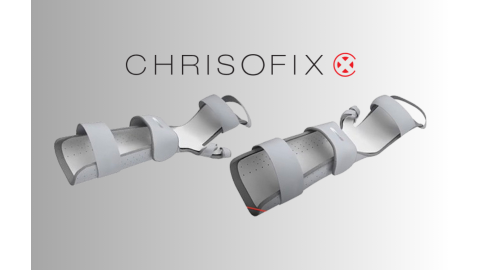A pressure injury is an injury to the skin and underlying tissue due to prolonged pressure on the area. In conversation, people may refer to them as “bedsores” or even “pressure ulcers.” But because these injuries can vary in severity and cause, the best term to describe this type of ailment is a “pressure injury.” Whether or not an open wound is present depends on the stage or category of the specific pressure injury.
Stage One: What You Will Notice
A stage one pressure injury is the least severe since it does not include an open wound of any kind or any visible damage to the skin.
But there are things that can be noted with the naked eye. Although the skin is still intact, it may differ in color from the surrounding area depending on the individual’s skin pigment. There is usually some redness on a specific area over a bony prominence. This same area may also be warmer or cooler than the surrounding tissue, either firmer or softer than typical, and painful.
Stage One: Recovery and Treatment
The good news is that a stage one pressure injury is relatively easy to recover from, especially with the right tools and education.
After a doctor is consulted, there are multiple cushions that can help an individual learn to shift weight. This is important for recovery in this stage so that the pressure injury heals and does not advance. These cushions can be used in conjunction with education that should be given by a medical professional on proper weight shifting.
Stage Two: What You Will Notice
This is the most common stage for a pressure injury to be discovered. It’s also helpful to know they are most often found in the sacral region of the pelvis.
A stage two pressure injury will present as a shallow, open ulcer with a pink to red wound bed. It can also look like an intact or even ruptured fluid-filled blister. The injury itself will be shallow, without slough or bruising. In this stage, there is a partial loss of skin and the dermis is exposed.
Stage Two: Recovery and Treatment
While seeking medical attention, there may be specific cushions that can help, depending on the physician’s advice and where the pressure injury is located. These will help with positioning based on the areas that are at a higher risk of skin breakdown, like a sacral cushion for the tailbone area. A contoured foam cushion can also be a great comfort during recovery.
Since this type of injury requires the new growth and regeneration of tissue and skin, recovery can be longer and more difficult. Recovery can also be affected by other diagnoses and ailments. Most importantly, a medical professional or physician should be consulted so the risk of developing a stage three pressure injury can be avoided at all costs.
Stage Three: What You Will Notice
In this stage, there is some tissue loss. Fat may be visible but bone, tendon, and muscle are not exposed by the injury. There may be slough or what looks like peeling away of the skin. Additionally, tunneling and undermining may be present at this stage.
This is a serious injury. Please seek immediate medical attention. In this case, an individual is at risk for infection and continued skin breakdown. Moreover, there is a high risk of illness or death due to the possible infection that can occur with a stage three pressure injury.
Stage Three: Recovery and Treatment
In this case, the recovery is significant. There may be the need for skin grafting and seating restrictions.
Armed with medical help, ROHO cushions may bring some comfort during that long and difficult recovery. These allow the individual or their caregivers to decrease the pressure to sensitive areas while the user is in a wheelchair or seated. Since these cushions inflate with air, it is easy to adjust to what is most comfortable in terms of firmness throughout the difficult process of recovery.
Stage Four: What You Will Notice
In stage four, there is definitely deep tissue loss. Stage three symptoms will still be present, along with exposed bone, tendon, or muscle. This exposure is both visible and palpable. Also, this stage very often includes undermining and tunneling.
Stage Four: Recovery and Treatment
This is an incredibly serious injury that will require skin grafting followed by seating restrictions. It will require months of recovery as well as a specialty bed.
Along with that specialty bed, alternating pressure cushions can be helpful because they have air pockets which inflate and deflate as the individual shifts or moves. This also helps prevent future pressure injury issues while aiding in recovery.
No matter the stage, a pressure injury is something that should be treated as quickly as possible by a medical professional so it does not increase in severity. If caught in an early stage, they can be treatable so it’s important to stay vigilant.
Medical Disclaimer: The information provided on this site, including text, graphics, images and other material, are for informational purposes only and are not intended to substitute for professional medical advice, diagnosis or treatment. Always seek the advice of your physician or other healthcare professional with any questions or concerns you may have regarding your condition.








 France
France Australia
Australia





